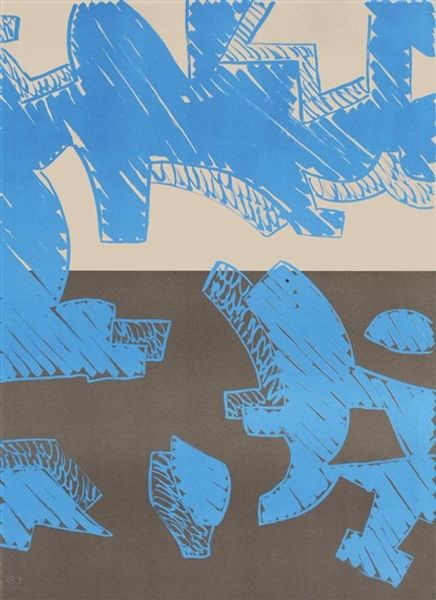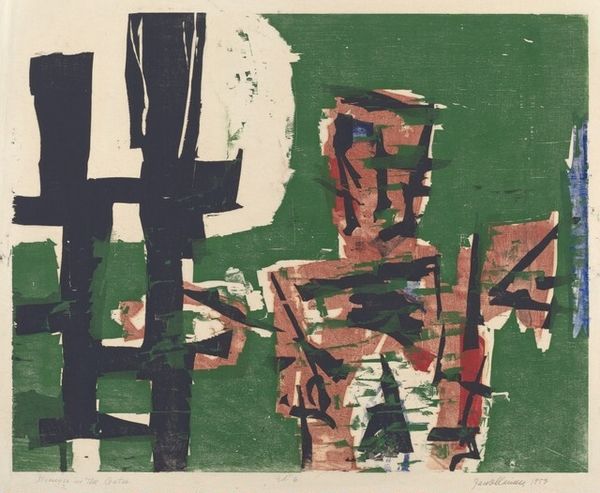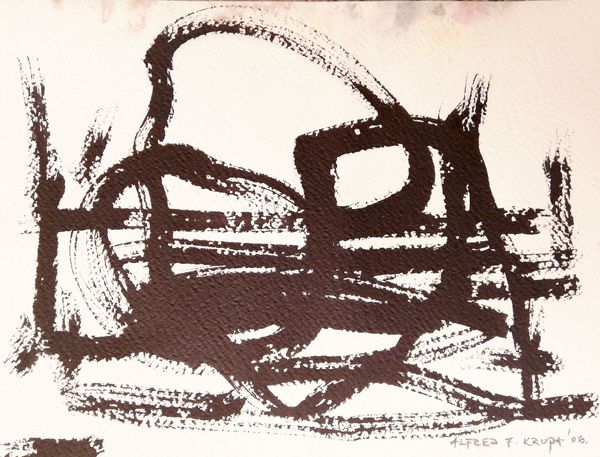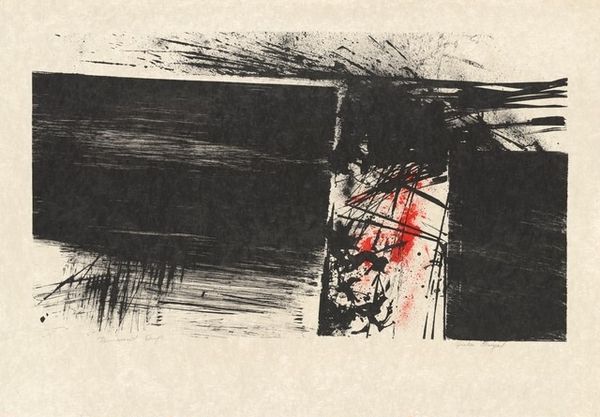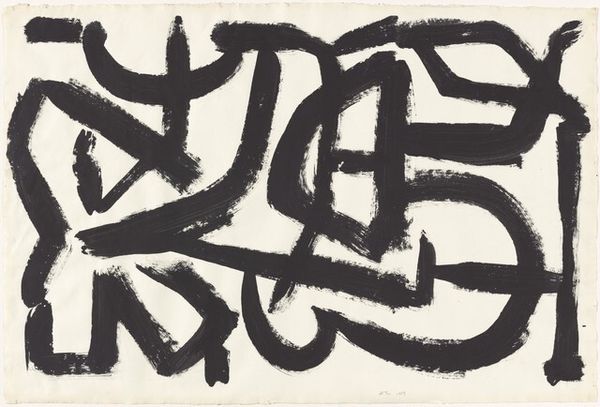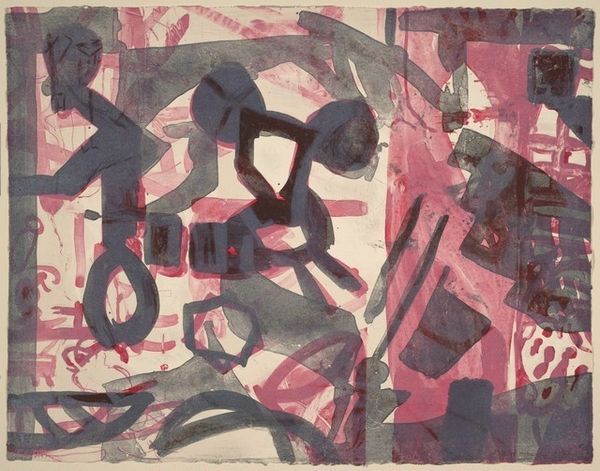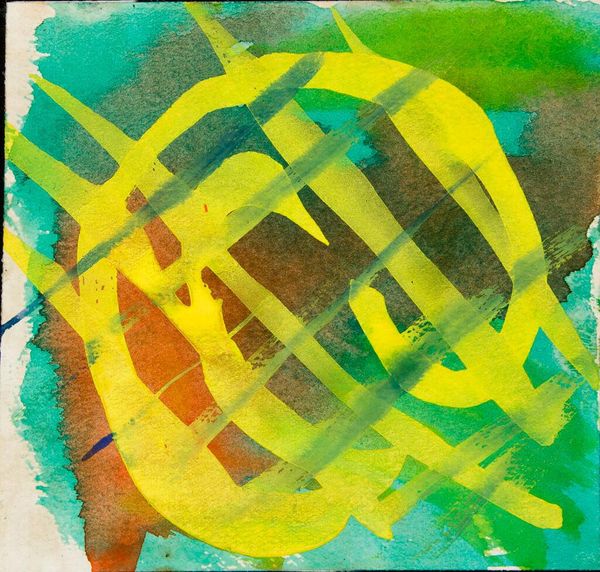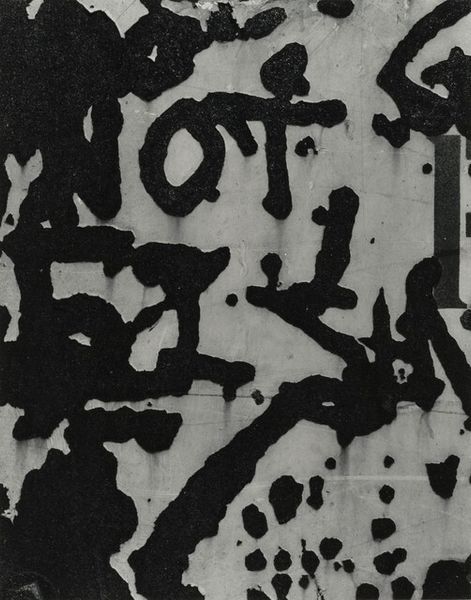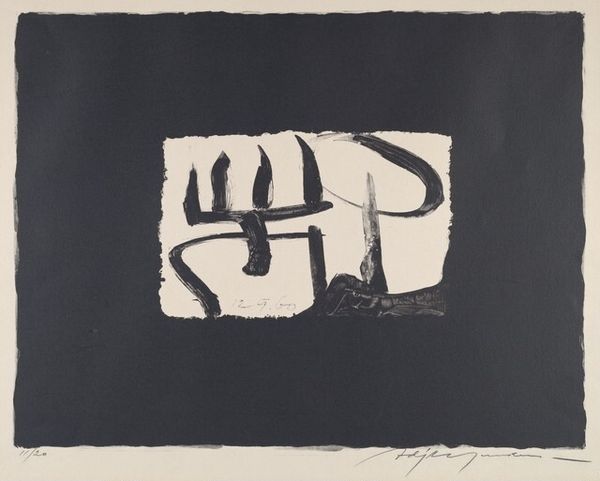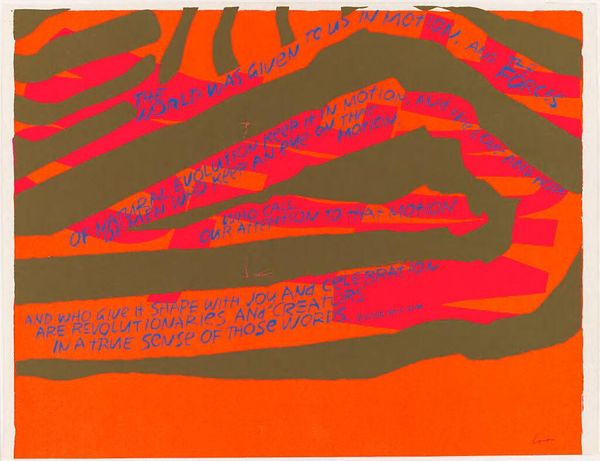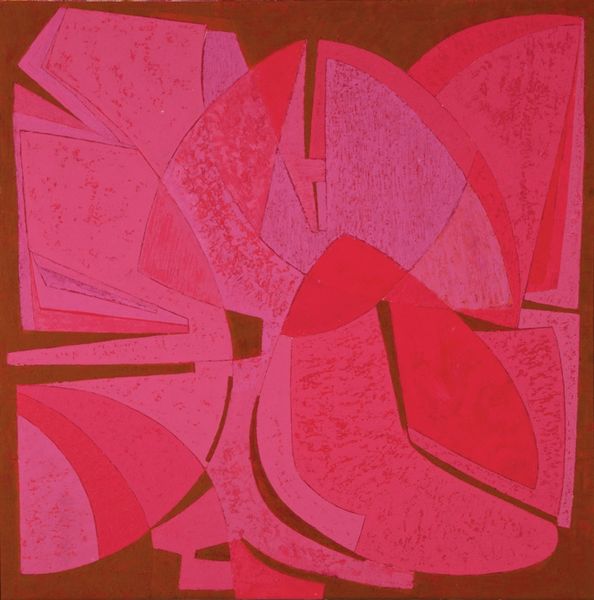
Dimensions: image: 332 x 508 mm
Copyright: © Cy Twombly Foundation | CC-BY-NC-ND 4.0 DEED, Photo: Tate
Curator: Here we have Cy Twombly’s "The Song of the Border-Guard," currently held in the Tate Collections. It's a striking image of gestural marks. Editor: Wow, it feels so raw, almost primal. Those bold strokes against the salmon background, it's like some ancient script or code. Curator: Yes, Twombly often evoked classical themes and mythology through fragmented text and abstract expression. Think of these marks as symbolic echoes. Editor: Echoes, exactly! Like faded memories of rituals or warnings etched onto stone. I wonder, is that “border-guard” protecting something or someone? Curator: Borders themselves are powerful symbols of division and transition. His work invites us to consider the fluidity of boundaries—cultural, personal, artistic. Editor: You know, looking at it this way, it's less about the song and more about the space where the song fades. The silence *around* the border. Curator: Indeed. It's a fascinating work for considering how meaning is constructed through both presence and absence. Editor: I never thought I could feel silence in a painting. This one really hits you.
Comments
tate 6 months ago
⋮
http://www.tate.org.uk/art/artworks/twombly-the-song-of-the-border-guard-p77550
Join the conversation
Join millions of artists and users on Artera today and experience the ultimate creative platform.
tate 6 months ago
⋮
Since 1977, Twombly has made several chariot-like sculptures. The theme reflects his fascination with the ancient world, particularly Homer's account of the Trojan War in The Iliad. This work is especially minimal, combining a simple disc and triangle to suggest the wheel and body of the chariot. Gallery label, August 2004
